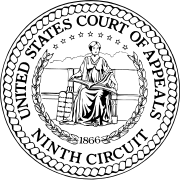A&M Records, Inc. v. Napster, Inc.
| A&M Records, Inc. v. Napster, Inc. | |
|---|---|
 |
|
| Court | United States Court of Appeals for the Ninth Circuit |
| Full case name | A&M Records, Inc. v. Napster, Inc. |
| Argued | October 2 2000 |
| Decided | February 12 2001 |
| Citation(s) | 239 F.3d 1004 |
| Holding | |
| Napster could be held liable for contributory and vicarious copyright infringement, affirming the District Court holding. | |
| Court membership | |
| Judge(s) sitting | Mary M. Schroeder, Richard Paez, Robert R. Beezer |
| Case opinions | |
| Majority | Robert R. Beezer |
| Laws applied | |
| 17 U.S.C. § 501, 17 U.S.C. §106 | |
A&M Records, Inc. v. Napster, Inc., 239 F.3d 1004 (2001) was a landmark intellectual property case in which the United States Court of Appeals for the Ninth Circuit affirmed the ruling of the United States District Court for the Northern District of California, holding that defendant, peer-to-peer (P2P) file-sharing service Napster, could be held liable for contributory infringement and vicarious infringement of the plaintiffs' copyrights. This was the first major case to address the application of copyright laws to peer-to-peer file-sharing.
Since the case is referred to as A&M Records, Inc. v. Napster, the full list of plaintiffs included a number of record companies, all members of the Recording Industry Association of America (RIAA). The plaintiffs in the District Court suit were:
Universal Music Group, Sony Music Entertainment, EMI, and Warner Music Group are known as the "big four" in the music industry. Of this list, only A&M, Geffen, Interscope, Sony, MCA, Atlantic, Island, and Motown are listed as plaintiffs on the appeal. Additionally, American songwriters and producers Jerry Leiber and Mike Stoller are included on the Circuit Court appeal, representing the interests of "all others similarly situated."
Napster was started in 1999 by Shawn Fanning, then an 18-year-old freshman computer science student at Northeastern University. It provided a platform for users to access and download compressed digital music files, specifically MP3s, from other users' machines. Unlike many peer-to-peer services, however, Napster included a central server that indexed connected users and files available on their machines, creating a searchable list of music available across Napster's network. Napster's ease of use compared to other peer-to-peer services quickly made it a popular service for music enthusiasts to find and download digital song files for free.
...
Wikipedia
